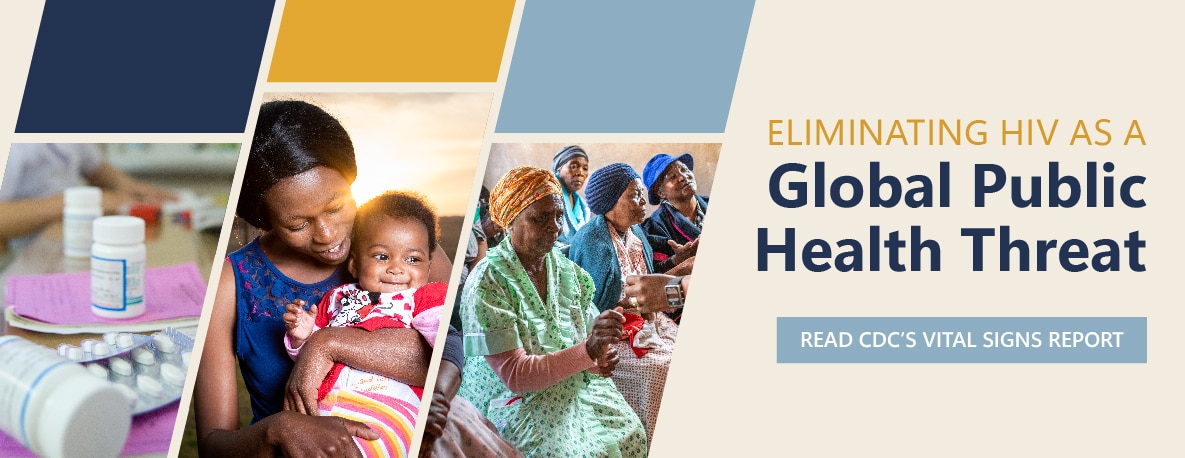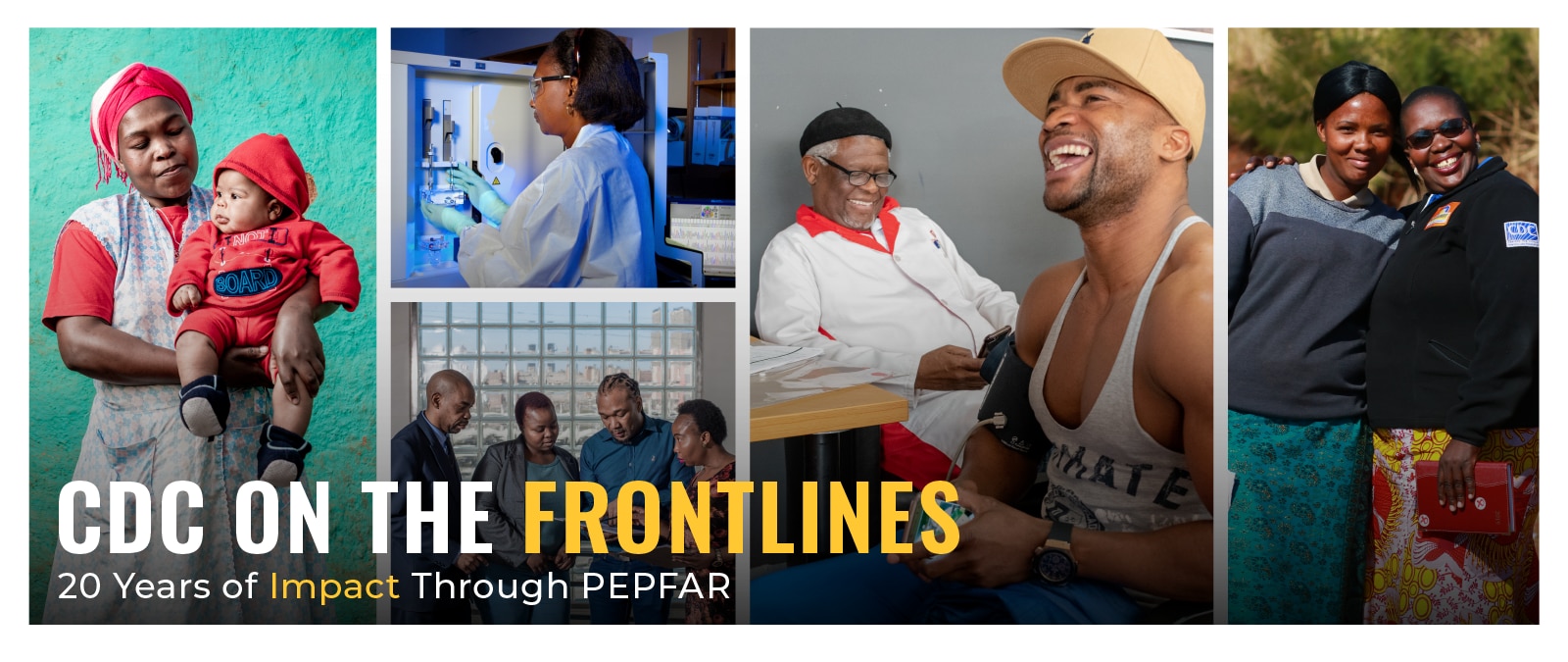Cameroon Country Profile

Cameroon Country Profile
Discover more about CDC’s work in Cameroon by viewing our detailed country profile
Country Overview
CDC and the Government of Cameroon began a partnership in 2008 to support the development of a sustainable public health infrastructure in the country. CDC’s initial engagement focused on providing technical leadership on HIV epidemic control efforts within the country. This partnership has evolved to include direct clinical support and assistance to the Ministry of Health and local non-governmental organizations to scale-up access to HIV prevention and treatment services. CDC continues to support the Ministry in the areas of epidemiology, HIV surveillance, laboratory, operations research, and workforce capacity development.
Per Capita GNI
$1,660
(2022)
Population (million)
27.91
(2022)
Under 5 Mortality
69.8/1,000 Live Births
(2021)
Life Expectancy
60.3 Years
(2021)
Estimated HIV Prevalence
2.6%
(Ages 15-49): (2022)
Estimated AIDS Deaths
7,400
(Age≥15) (2022)
TB Treatment Success Rate
86%
(2020)
Estimated TB Incidence
164/100,000
(2021)
Estimated Orphans Due to AIDS
350,000
(2022)
TB patients with known HIV-status who are HIV-positive
20%
(2021)
Reported Number Receiving Antiretroviral Therapy (ART)
413,135
(Age≥15) (2022)
Strategic Focus
Maximizing Unique Government-to-Government Relationships with the Ministry of Health (MoH): The Centers for Disease Control and Prevention (CDC) and the Government of the Republic of Cameroon (GRC) began a partnership in 2008 to support the development of sustainable public health capacity and infrastructure. CDC’s role has evolved from solely providing technical leadership to now including direct clinical support and assistance to the Ministry of Health (MOH).
Strengthening Public Health Systems: CDC provides expert public health science leadership and direct assistance to the MOH and local non-governmental organizations to prevent, detect and respond to public health challenges while strengthening epidemiology, surveillance, laboratory, operations research, HIV prevention and treatment programs, and workforce capacity development. CDC-Cameroon’s HIV program strategy focuses on increasing antiretroviral treatment (ART), prevention of mother-to-child HIV transmission (PMTCT), strengthening laboratories, linkages to treatment, and strategic information.
Key Activities and Accomplishments
Treatment Scale up: CDC Cameroon’s U.S. President’s Emergency Plan for AIDS Relief (PEPFAR) specific priorities include scaling-up access to HIV prevention and treatment to achieve HIV epidemic control. Cameroon’s Accelerating Children’s HIV/AIDS Treatment (ACT) initiative has made great strides in providing ART to children. Through a strong partnership, MOH has approved test and start and task shifting policies and delivery of ART medications for adults and children living with HIV. Tuberculosis (TB) remains a major cause of morbidity and mortality for people living with HIV (PLHIV). CDC supports HIV testing among TB patients to ensure access to early ART to prevent AIDS-related morbidity and mortality; and TB screening and provision of isoniazid preventive therapy (IPT) to prevent TB morbidity among PLHIV.
Laboratory Capacity: National Public Health Laboratory (NPHL) renovation is complete and the national strategic laboratory plan was enhanced in 2018; CDC launched and implemented the first national proficiency testing program (PT), which currently has over 800 laboratories enrolled for HIV rapid testing, and CDC assisted with the implementation and roll out of the Strengthening Laboratory Improvement Process towards Accreditation (SLIPTA) with one laboratory obtaining SANAS Accreditation and 13 laboratories currently enrolled in the accreditation process. CDC provided technical assistance and laboratory support to set up and build the capacity of two laboratories for DNA/RNA polymerase chain reaction testing, one of which is now the first SANAS ISO-15189 Accredited laboratory for Cameroon and Central Africa. Both laboratories currently serve as national reference laboratories for early infant diagnosis and viral load testing services to support the country’s treatment program.
Strategic Information: CDC has supported improvements in the national HIV/AIDS monitoring and evaluation (M&E) system and harmonization of M&E registers and data collection tools with close to 25,000 registers printed and distributed nationally. CDC is strengthening Cameroon’s Health Information System through technical and financial support for the customization, piloting, and rollout of District Health Information Software (DHIS) at national, regional, and district levels. The Cameroon Population-based HIV Impact Assessment (CAMPHIA) completed data collection in February 2018 and results will inform HIV strategic planning and decision-making.

Tracking PEPFAR Impact Toward Global Targets
The U.S. Centers for Disease Control and Prevention (CDC) works with partners including host countries, local implementing partners, faith-based organizations, and other community-based organizations to measure progress towards HIV epidemic control in countries supported by the U.S. President’s Emergency Plan for AIDS Relief (PEPFAR).

Vital Signs: Global HIV Communications Toolkit
In 2003, the U.S. President’s Emergency Plan for AIDS Relief, or PEPFAR, was announced. When it was launched, PEPFAR became the largest commitment by any nation to address a single disease in history. At the time, HIV was a global crisis, devastating families, communities, and economies worldwide—particularly in sub-Saharan African countries.

CDC On the Frontlines
Over the past 20 years, the U.S. President’s Emergency Plan for AIDS Relief (PEPFAR) has saved millions of lives as a leader in the global response to two of the world’s deadliest infectious diseases – HIV and TB. As a key implementing agency of the U.S. President’s Emergency Plan for AIDS Relief (PEPFAR), CDC is at the forefront of these global efforts to treat and prevent these diseases.